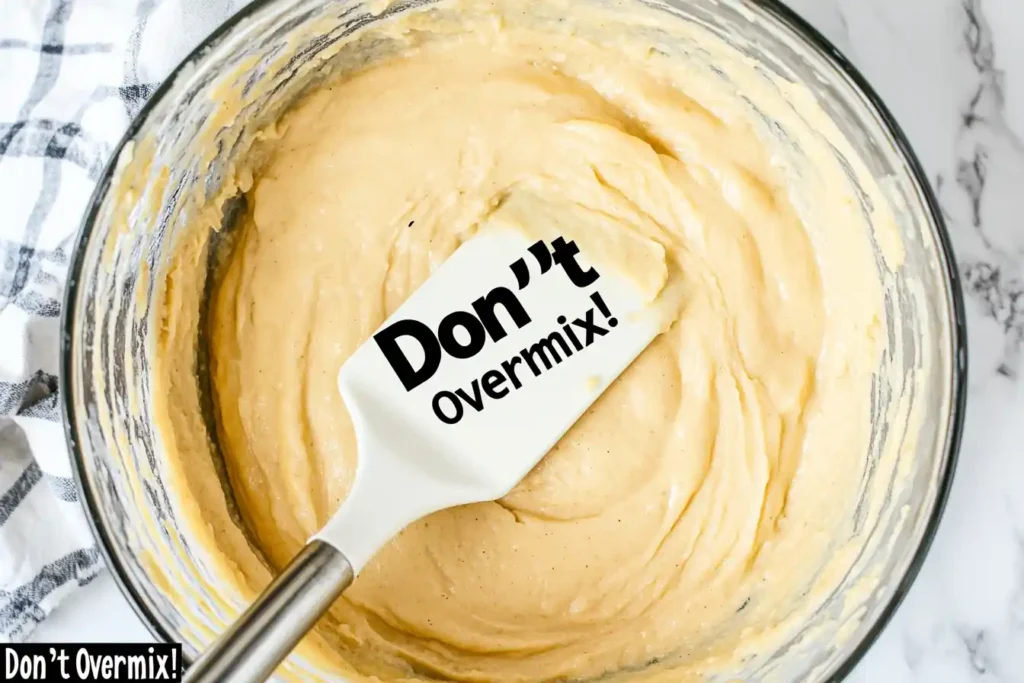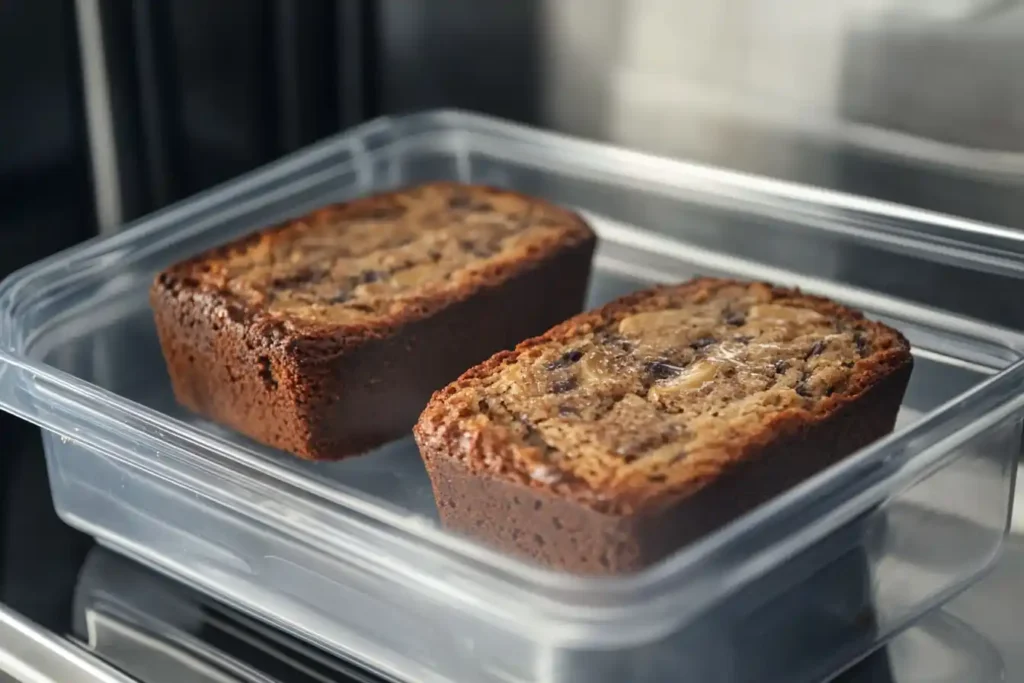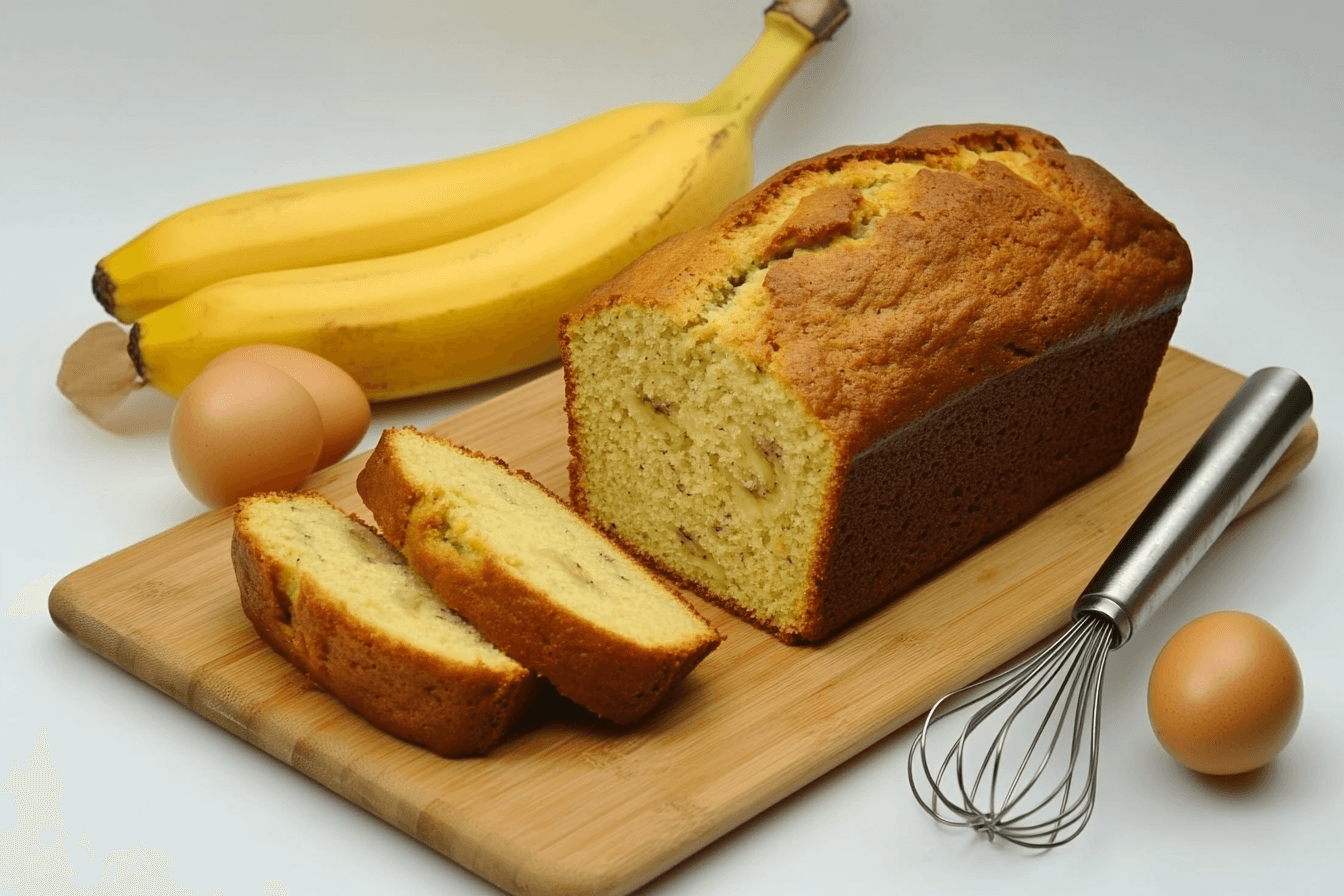Introduction
Banana bread is a timeless favorite, loved for its rich flavor and moist texture. But have you ever wondered, what is the number one mistake made when making banana bread? Surprisingly, overmixing the batter is the most common error, leading to dense and tough loaves. In this article, we’ll uncover this mistake and explore other common pitfalls, along with practical tips to help you bake the perfect banana bread every time.
However, despite its popularity, baking the perfect banana bread can sometimes feel tricky. Many bakers, both new and experienced, often run into issues like dry texture, uneven baking, or dense bread. So, what is the number one mistake made when making banana bread?
The most common culprit is overmixing the batter—a seemingly harmless action that can ruin the texture of your loaf. But don’t worry! In this article, we’ll dive deep into this mistake, explore other potential pitfalls, and provide practical tips to help you bake the perfect banana bread every single time.
Common Mistakes in Banana Bread Baking
1. Overmixing the Batter

When it comes to banana bread, less is often more—especially when mixing the batter. Overmixing is the number one mistake bakers make, and it’s the leading cause of dense, tough bread instead of a light and fluffy loaf.
Why Overmixing Is a Problem
Banana bread batter contains flour, which includes gluten—a protein that gives structure to baked goods. While a bit of gluten development is essential, overmixing activates too much gluten, resulting in a chewy and heavy texture. Instead of getting a moist and tender crumb, you end up with bread that feels more like a brick.
How to Avoid Overmixing
- Mix Wet and Dry Ingredients Separately: First, combine the wet ingredients (bananas, eggs, vanilla) and dry ingredients (flour, baking soda, salt) in separate bowls.
- Fold Gently: When you mix the wet and dry ingredients together, use a spatula and gently fold them until just combined. It’s okay if you see a few lumps of flour—these will disappear during baking.
- Count Stirs: Limit yourself to about 10–15 gentle stirs. Stop as soon as the ingredients are incorporated.
2. Using Overripe or Underripe Bananas
Bananas are the star ingredient, so their ripeness can make or break your bread.
Best Ripeness for Bananas
The ideal bananas for baking should be overripe but not rotten. Look for bananas with brown spots on the peel—they’re sweeter and softer, which enhances flavor and moisture. Avoid bananas that are still green or completely black inside.
Quick Ripening Methods
- Oven Method: Bake unpeeled bananas at 300°F (150°C) for 15–20 minutes until the skin turns black.
- Microwave Method: Poke holes in the banana peel with a fork and microwave for 30 seconds at a time until soft.
- Paper Bag Method: Place bananas in a paper bag with an apple to speed up ripening in 1–2 days.
Using bananas at their peak ripeness ensures natural sweetness and moistness in your bread.
3. Incorrect Measurement of Ingredients
Baking is more science than art, and accurate measurements are crucial.
Why Precise Measuring Matters
Adding too much flour can make banana bread dry, while too little can make it too wet. The same applies to sugar, baking powder, and even liquids like milk or oil.
Tips for Accurate Measurements
- Use Measuring Cups for Dry Ingredients: Spoon flour into the measuring cup and level it off with a knife—never scoop directly, as this packs the flour and leads to over-measuring.
- Use Liquid Measuring Cups for Wet Ingredients: Always measure liquids at eye level for accuracy.
- Weigh Ingredients When Possible: For ultimate precision, invest in a kitchen scale.
Taking time to measure correctly eliminates guesswork and guarantees consistent results.
4. Ignoring Moisture Balance
Moisture balance plays a vital role in baking banana bread. Too much moisture can make the loaf soggy, while too little moisture results in dry and crumbly bread. Finding the right balance ensures the perfect texture—moist but not dense.
Effects of Too Much or Too Little Moisture
- Too Much Moisture: Overripe bananas or adding too many wet ingredients like milk or oil can create a gummy and undercooked center.
- Too Little Moisture: Using underripe bananas or reducing oil and butter leads to dryness and cracking.
Tricks to Maintain Moisture Levels
- Choose the Right Bananas: Use bananas that are soft, spotty, and slightly mushy for optimal moisture.
- Balance Wet and Dry Ingredients: Adjust liquids like milk or oil if the batter feels too runny or too thick.
- Add Sour Cream or Yogurt: Incorporating 1–2 tablespoons of sour cream or yogurt helps to lock in moisture without making the bread greasy.
- Avoid Overbaking: Use a toothpick test to check for doneness instead of relying solely on baking time. Remove the bread as soon as the toothpick comes out clean or with a few moist crumbs.
By keeping the moisture balance in check, you’ll always have a perfectly soft and moist banana bread.
5. Skipping Ingredient Substitution
Ingredient substitutions can affect both texture and flavor, and skipping proper adjustments can lead to unsatisfactory results.
Common Ingredient Swaps and Their Effects
- Flour Substitutes:
- Whole wheat flour adds fiber but may make the bread denser. Mix it with all-purpose flour for a lighter texture.
- Gluten-free flours need a binder like xanthan gum to maintain structure.
- Sugar Substitutes:
- Honey or maple syrup can replace white sugar, but reduce other liquids to avoid an overly wet batter.
- Oil Alternatives:
- Applesauce or mashed avocado can replace oil for a healthier option, but these may slightly alter texture.
Dairy-Free and Gluten-Free Alternatives
- Replace regular milk with almond, oat, or coconut milk.
- Use plant-based butter or coconut oil instead of dairy butter.
- Opt for gluten-free flour blends to cater to dietary restrictions.
Always test substitutions in small batches first to ensure the best results.
6. Baking Temperature and Time Issues
The right baking temperature and timing are critical for even cooking.
Problems Caused by Incorrect Oven Temperature
- Too High: A high temperature can cause the crust to brown too quickly while leaving the inside undercooked.
- Too Low: A low temperature results in a dense, gummy loaf that takes too long to bake.
How to Avoid Temperature and Timing Issues
- Preheat the Oven: Always preheat your oven to 350°F (175°C) before baking.
- Use an Oven Thermometer: Ovens can be off by several degrees, so a thermometer helps ensure accuracy.
- Test for Doneness: Insert a toothpick or skewer into the center. If it comes out clean or with just a few moist crumbs, it’s done.
- Tent with Foil if Browning Too Fast: If the top browns too quickly, cover it loosely with foil during the last 10–15 minutes.
Taking these precautions prevents uneven baking and guarantees a golden-brown crust with a moist interior.
7. Not Greasing the Pan Properly
Failing to grease the baking pan is a rookie mistake that leads to sticking and crumbling when removing the loaf.
Preventing Sticking and Breaking
- Use Parchment Paper: Line the bottom of the pan with parchment paper, leaving an overhang for easy lifting.
- Grease Thoroughly: Coat the pan with butter or non-stick spray, ensuring the corners are covered.
- Flour the Pan (Optional): After greasing, dust the pan lightly with flour for added non-stick protection.
Best Techniques for Preparing the Pan
- For metal pans, use butter and flour to create a protective barrier.
- For silicone pans, a light spray of oil is often sufficient.
- Avoid glass pans, as they can cause uneven baking due to slower heat conduction.
By prepping the pan properly, you can easily remove the loaf without damaging its shape.
8. Overloading with Add-Ins
Banana bread offers plenty of opportunities to get creative with mix-ins like nuts, chocolate chips, and dried fruits. However, adding too many extras can overwhelm the batter, resulting in uneven baking and structural collapse.
Balancing Nuts, Chocolate Chips, and Fruits
While add-ins can enhance flavor and texture, moderation is key. Too many mix-ins can:
- Weigh down the batter, causing it to sink in the center.
- Create pockets of moisture, leading to an undercooked interior.
- Overpower the banana flavor, which should remain the star of the loaf.
Ideal Add-In Ratios
- Nuts (e.g., walnuts, pecans): ½ to ¾ cup chopped.
- Chocolate Chips: ½ cup for sweetness without overpowering.
- Dried Fruits (e.g., raisins, cranberries): ¼ to ½ cup, soaked beforehand to prevent dryness.
Tips for Even Distribution
- Coat Add-Ins with Flour: Tossing mix-ins with a tablespoon of flour prevents them from sinking to the bottom.
- Fold Gently into Batter: Add extras after mixing the wet and dry ingredients to avoid overworking the batter.
Maintaining balance ensures the banana flavor shines through while offering bursts of texture and taste.
9. Skipping Rest Time Before Serving
Freshly baked banana bread can be incredibly tempting, but cutting into it too soon is a common mistake. Allowing it to rest is crucial for flavor development and structural integrity.
Why Resting Matters
- Flavor Maturation: The bread’s flavors deepen and become richer as it cools.
- Texture Improvement: Cooling solidifies the crumb structure, making slicing easier and preventing crumbling.
- Moisture Distribution: Resting time allows moisture to redistribute evenly, preventing dry edges.
How Long to Let Banana Bread Cool
- Initial Cooling: Let the bread cool in the pan for 10–15 minutes.
- Transfer to Wire Rack: Remove the loaf and let it cool completely (about 1–2 hours) before slicing.
Resisting the urge to cut too early ensures a better texture and flavor payoff.
10. Storing Banana Bread Improperly

Even a perfectly baked banana bread can lose its appeal if stored incorrectly. Improper storage leads to dryness, staleness, or mold growth.
Proper Storage Methods to Maintain Freshness
- Room Temperature Storage:
- Wrap the loaf tightly in plastic wrap or aluminum foil.
- Place it in an airtight container to prevent drying.
- Consume within 3–4 days.
- Refrigeration (Optional):
- If your kitchen is humid, refrigerate the bread, but note that it may dry out faster.
- Wrap well and warm slices before serving to restore softness.
- Freezing for Long-Term Storage:
- Wrap individual slices in plastic wrap, then place them in a freezer-safe bag.
- Freeze for up to 3 months.
- Thaw slices at room temperature or microwave briefly.
Reheating Tips
To revive banana bread’s freshness, microwave slices for 10–15 seconds or toast them lightly for a crisp exterior.
Proper storage ensures you can enjoy banana bread long after baking it!
FAQs
1. What ingredients make banana bread moist?
Bananas, eggs, butter, and oil contribute to moisture. Adding yogurt or sour cream can enhance moistness without making it greasy.
2. How do I know when banana bread is done?
Insert a toothpick into the center of the loaf. It should come out clean or with a few moist crumbs but no wet batter.
3. Can I use frozen bananas for banana bread?
Yes! Thaw frozen bananas and drain any excess liquid before mashing them. They often add extra moisture to the bread.
4. Why does my banana bread sink in the middle?
Overmixing, underbaking, or adding too much liquid can cause sinking. Make sure the batter is mixed gently and bake until fully set.
Conclusion
Banana bread is a timeless classic that can easily become a staple in any kitchen. However, achieving the perfect loaf requires attention to detail and a bit of practice. As we’ve explored, the number one mistake made when making banana bread is overmixing the batter. This seemingly small error can lead to dense and tough bread instead of the soft, moist, and flavorful loaf we all crave.
By mixing the batter gently, using properly ripened bananas, measuring ingredients accurately, and maintaining the right moisture balance, you can avoid common pitfalls and bake banana bread that’s light, fluffy, and absolutely delicious.
We also covered other important tips, such as:
- Choosing the right add-ins to enhance flavor without overwhelming the batter.
- Allowing the bread to cool properly for better texture and flavor development.
- Storing it correctly to preserve freshness and extend shelf life.
Whether you’re baking for breakfast, a snack, or a special occasion, following these tips will help you master banana bread and impress family and friends with your baking skills. So grab those ripe bananas and start baking the perfect loaf today!
Looking for more ways to improve your baking skills? Check out our step-by-step guide to making banana bread using a bread machine for a hassle-free approach. If you enjoy experimenting with bread, don’t miss our tips on sourdough garlic bread and discover the secrets to flavorful loaves!

